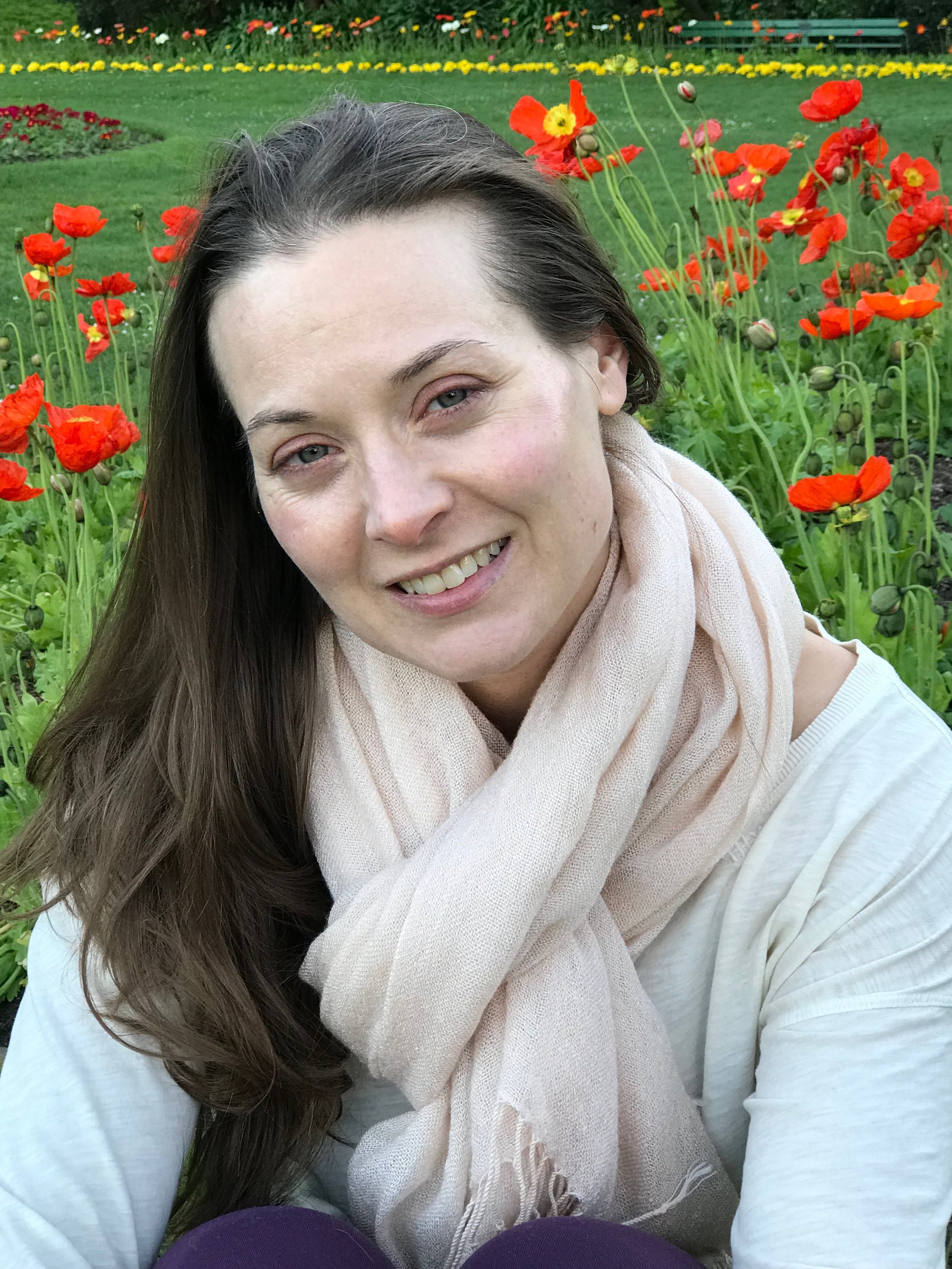About Julie
Julie Loder is a certified ESSENTRICS® instructor, and a lifelong student of movement, who made a dramatic career change to follow her heart and share her passion for all aspects of health and wellness.
Julie has previously worked in the criminal justice system, directed an international non-profit organization, advocated for family-friendly early childhood education policy, taught high school, and served as an ombudsman. Now she has found what she feels is her highest purpose of helping people become more in tune with -- learn to listen to, respect, love, appreciate, enjoy living and playing in -- their own bodies, something she believes is the cornerstone of all dimensions of wellness.
Julie's other favorite activities include hiking with her dogs, social dancing, and working in her garden. She is also a voracious consumer of all things related to health and wellness: webinars, seminars, books, trainings, podcasts, and whatever else she can get her hands on. Below is a list of some of the ways she has formalized her education, even while so much of it is not categorized.
I never stop studying. My bio, above, says I am a, “lifelong student of movement.” That started as a child imitating the ways animals move, and to this day, my happy place is learning about the body, or practicing something I have learned about the body with my own. With that in mind, the movement classes and online content I create comes from my own interest in helping my own body move and feel the best it can. ESSENTRICS® is one part of that, but in the same way we ideally consume a variety of nutritional inputs for a balanced diet, I strongly believe in a moving the body in all the ways it was designed. I therefore study and practice all different kinds of movement, and try to bring variety to my classes, to help my participants do the same. The following list of topics and coursework is just what I can formally catalogue.
Movement and Fitness Certifications
-Corrective Exercise Specialist, graduate of yearlong course in corrective exercise, mentored by Dr. Evan Osar through the Integrative Movement Institute
-Certified Personal Trainer through American College of Sports Medicine (ACSM CPT )
-Certified Level 4 ESSENTRICS® Instructor
-Functional Aging Specialist with the Functional Aging Institute (FAI)
-Certified Barefoot Training Specialist, Levels 1&2 through the Evidence Based Fitness Academy (*EBFA)
-Certified BARE® Workout Instructor through EBFA
Formal Trainings (for which certification was not available)
-Immaculate Dissection Anatomy intensive, ID 1 Core, ID 2 Lower Extremity, ID 3 Upper Extremity
-EBFA Foot and Ankle in depth coursework
-Rapid Movement (Power) Training with Paul Holbrook of Age Performance
Scholars and practitioners who most prominently shape my training philosophy:
Ron Hruska MPA, PT, the principles and philosophy of the Postural Restoration Institute® are central to my understanding of the body and are the launching place for every other movement modality I practice and apply.
Dr. Emily Splichal, NYC based podiatrist and human movement specialist, and founder of EBFA (see above certifications). Long before I even learned of ESSENTRICS®, I was implementing Dr. Splichal’s teachings in my own life to improve my own strength and movement. I am so grateful now to be working in a capacity where it has made sense to formalize my education with her so that I can competently extend what she has taught me, with others.
Dr. Evan Osar, for being a champion for people living with aches and pains around the world, and for being maverick thinker within health and fitness education. His teaching has been instrumental in bringing my understanding of the spine/hip/shoulder out of the text book, and into the real world, where I can hopefully do some good with it.
Dr. Kathy Dooley of Immaculate Dissection, because nobody else takes this deep a dive into functional anatomy, and corrective exercises, and I don’t have any use for surface level learning about the body.
Professor Stuart McGill, widely recognized as the authority on spinal and back health. I look to his work and recommendations to contextualize and complement what I teach in ESSENTRICS®.
Dr. Michael Merzenich at UCSF for a better appreciation of how powerful movement and music are to stimulate the brain. Ryan Glatt, at the Pacific Neuroscience Institute for the continuing education on how to be more strategic about and apply brain training through exercise.
Dr. Helene Langevin and Dr. Robert Schleip, for a better appreciation of fascia and how to move to best stimulate and keep it healthy.
Chris Thompson, Ph.D, creator of Mobility Matters and an absolute treasure of information about balance training and fall prevention.
Finally…
I can’t tell you about me, without telling you how I feel about dance….
Dance is a food group
Dance is my joy. I love my dogs to the moon and back (they are my children!). I love gardening. I love hiking… but when I am dancing, I am in my BLISS, where I have no sense of time, and my whole body is smiling, and spirit feels most alive. I have been social dancing mostly salsa, timba (my heart!), and bachata, merengue, cumbia for many years, and more recently finally began studying Cuban rumba and Afro-Cuban folkloric dance. Every dance genre has a different tone, mood, emotion, and muscularity, that it invites/allows us to inhabit and express, and I am so grateful to dance for the hours of joy it brings me, and the incredible community in which it welcomes me to take part.
I love sharing my joy of dance and helping others fall in love with it as well. Part of what makes social dance so special is that it is not a performance that can simply be judged by how it looks. Social dance is a dynamic collaboration between a lead and follow who combine their physical, technical skills and musicality and creativity, to make a typically ~5minute piece of magic come to life. What really makes it magical is the pair’s ability to connect with the music and with each other, so that they are not dancing what I tend to call “next to” one another, but genuinely WITH one another. In addition to being a sport and a source of incredible physical play, social dance challenges us in many ways, including to embody and transmit incredible personal vulnerability and interdependence with our partner.
When I go out dancing, people tend to ask if/assume I teach lessons. I currently only teach private lessons, aside from the occasional workshop at a dance festival, and this is in part because of WHAT I like to teach and the nature of the instruction. I do not teach “steps” or “patterns.” There are endless sources, from a plethora of other instructors including on YouTube, where people can learn patterns. I teach social dance connection. That is, I teach HOW to use your body, and how to perform those patterns in a way that allows you to truly do them in concert with your partner, not just next to your partner. I teach people to use their bodies so that they actually execute the movements in a way that either transmits lead (from the leader’s perspective) or is receptive and then also creatively responsive to the lead (from the follower’s perspective). We study the actual physical mechanics, the physical strength/balance/technical difficulty of leading and following different kinds of moves well, and also the nature of how to create the right mindset for leading and following, if that is manifesting in some physical blocks for the dancer (a hugely common and overlooked issue).
For me, learning to connect in social dance takes the activity from something recreational to something borderline spiritual, and I want to help people enjoy and enrich their lives with dance on that level. If you are interested in working with me, please be in touch.






